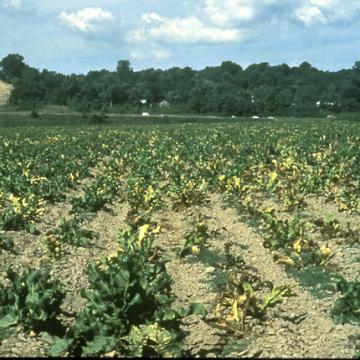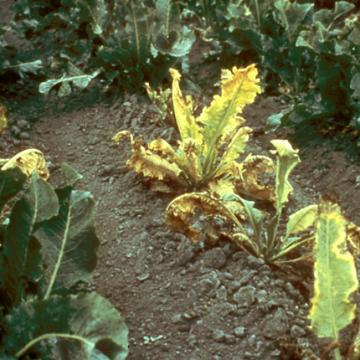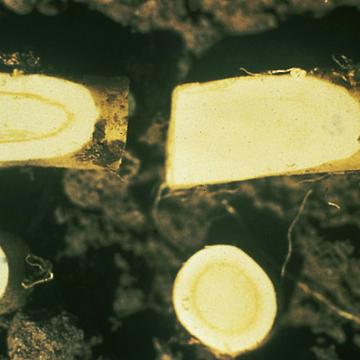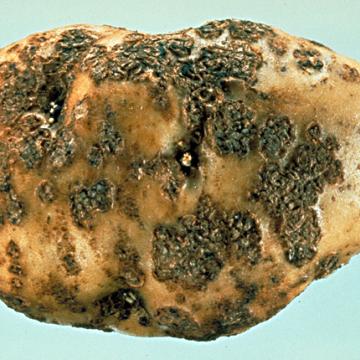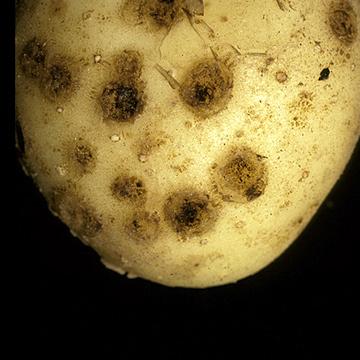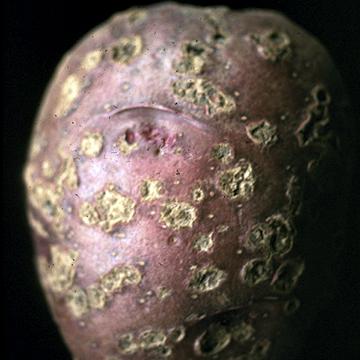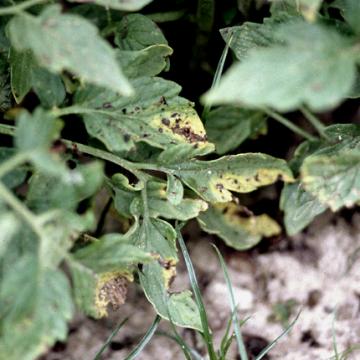DISEASE: Brittle root
HOST: Horseradish
Dying, stunted, yellow to brown horseradish plants.
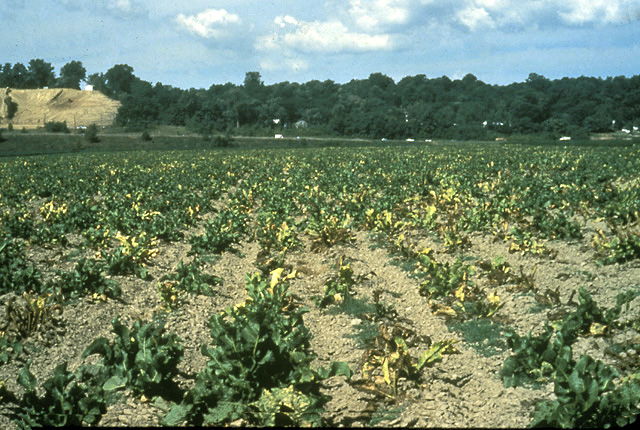
Brittle root | Horseradish
DISEASE: Brittle root
HOST: Horseradish (Armoracia rusticana)
PATHOGEN: Spiroplasma citri
SOURCE: C. Eastman, M. Davis
DISEASE: Brittle root
HOST: Horseradish
Close-up of stunted, yellow horseradish plants.
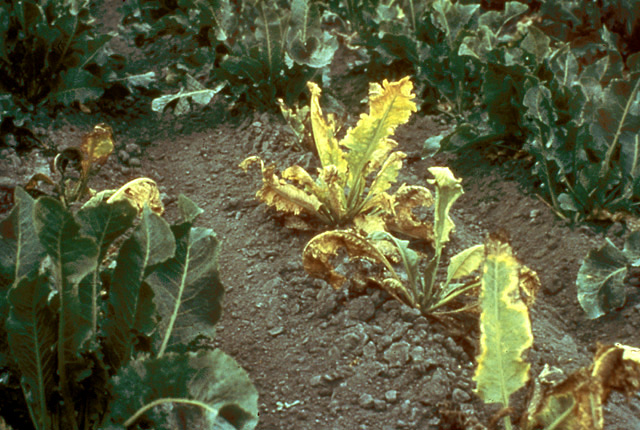
Brittle root | Horseradish
DISEASE: Brittle root
HOST: Horseradish (Armoracia rusticana)
PATHOGEN: Spiroplasma citri
SOURCE: D. Sherrod
DISEASE: Brittle root
HOST: Horseradish
Horseradish with discolored internal tissues. Healthy root segment (top right).
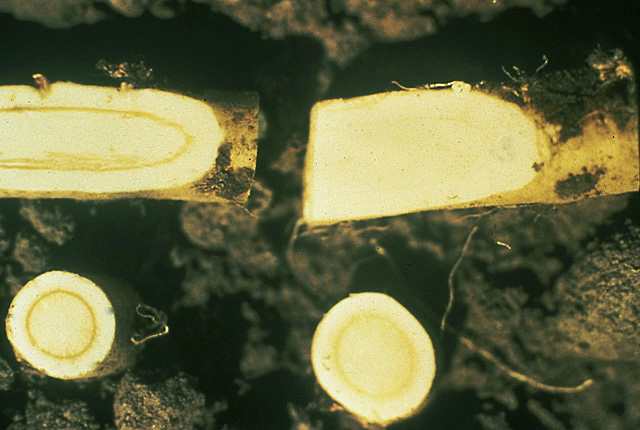
Brittle root | Horseradish
DISEASE: Brittle root
HOST: Horseradish (Armoracia rusticana)
PATHOGEN: Spiroplasma citri
SOURCE: J. Fletcher, M. Davis
DISEASE: Common scab (Potato scab)
HOST: Potato
Symptoms of common scab vary depending upon the cultivar. The lesions can be shallow or deep, erumpent and corky, and vary in color.
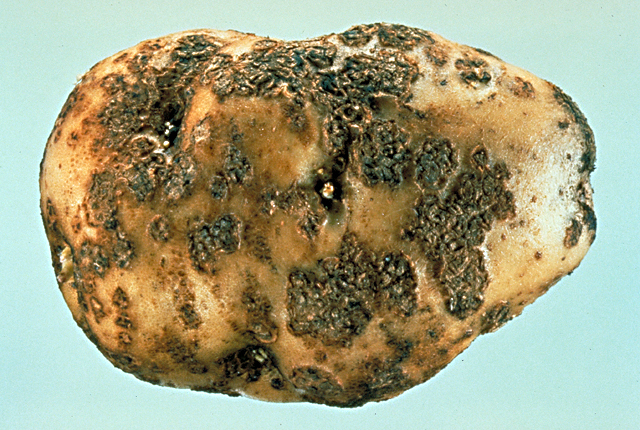
Common scab (Potato scab) | Potato
DISEASE: Common scab (Potato scab)
HOST: Potato (Solanum tuberosum)
PATHOGEN: Streptomyces scabiei
PATHOGEN SYNONYM: Streptomyces scabies
SOURCE: A. Secor
DISEASE: Common scab (Potato scab)
HOST: Potato
White-skinned tuber with sunken and superficial scab lesions.
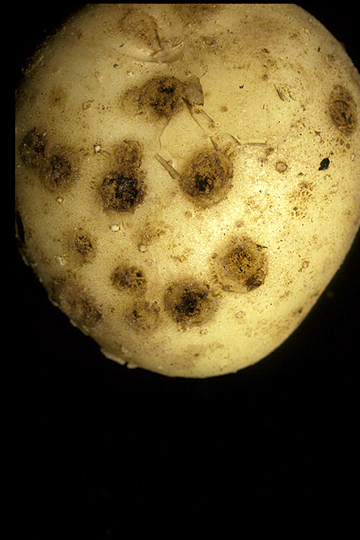
Common scab (Potato scab) | Potato
DISEASE: Common scab (Potato scab)
HOST: Potato (Solanum tuberosum)
PATHOGEN: Streptomyces scabiei
PATHOGEN SYNONYM: Streptomyces scabies
SOURCE: S. Thomson
DISEASE: Common scab (Potato scab)
HOST: Potato
Red-skinned tuber with lesions that usually penetrate less than 1 mm.
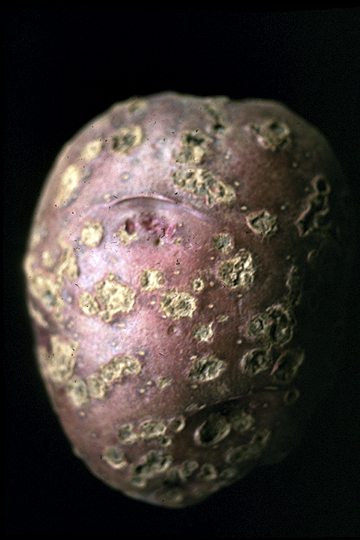
Common scab (Potato scab) | Potato
DISEASE: Common scab (Potato scab)
HOST: Potato (Solanum tuberosum)
PATHOGEN: Streptomyces scabiei
PATHOGEN SYNONYM: Streptomyces scabies
SOURCE: S. Thomson
DISEASE: Syringae leaf spot
HOST: Tomato
Leaves with brown necrotic lesions and chlorotic margins. Symptoms vary greatly among cultivars. Some have black or brown lesions with bright yellow, chlorotic areas and others do not have yellowing.
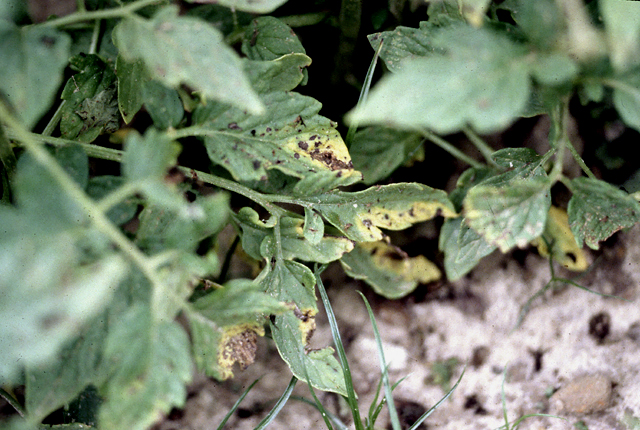
Syringae leaf spot | Tomato
DISEASE: Syringae leaf spot
HOST: Tomato (Lycopersicon esculentum)
PATHOGEN: Pseudomonas syringae pv. syringae
SOURCE: R. Gitaitis


